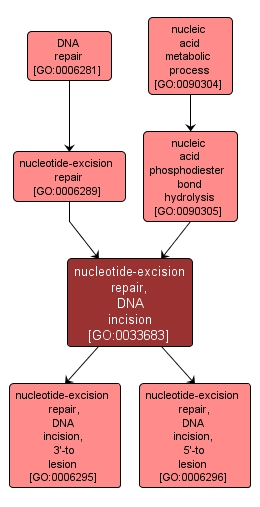GO TERM SUMMARY
|
| Name: |
nucleotide-excision repair, DNA incision |
| Acc: |
GO:0033683 |
| Aspect: |
Biological Process |
| Desc: |
A process that results in the endonucleolytic cleavage of the damaged strand of DNA. The incision occurs at the junction of single-stranded DNA and double-stranded DNA that is formed when the DNA duplex is unwound. |
Synonyms:
- nucleic acid cleavage involved in nucleotide-excision repair
- DNA incision involved in nucleotide-excision repair
|
|

|
INTERACTIVE GO GRAPH
|














